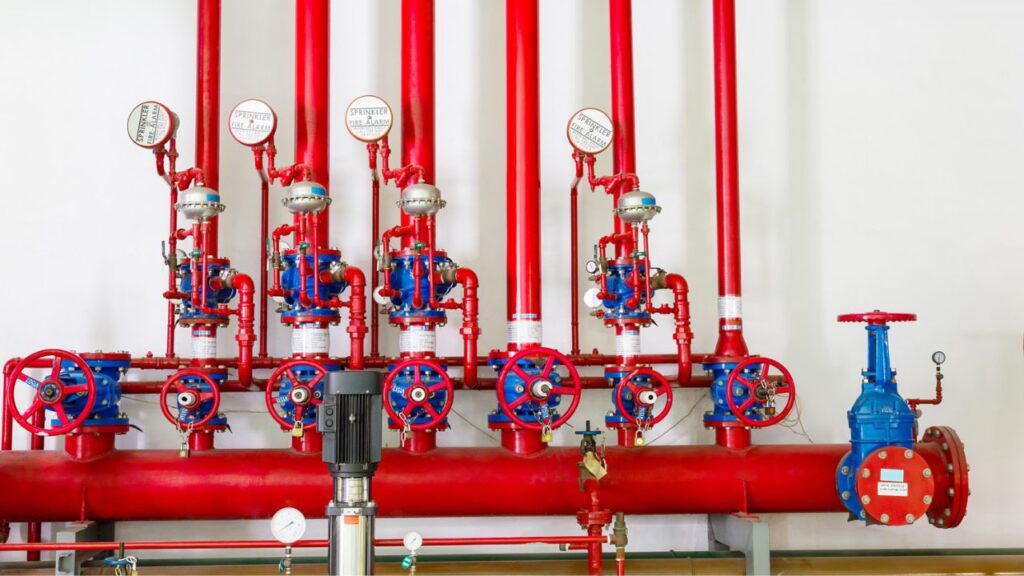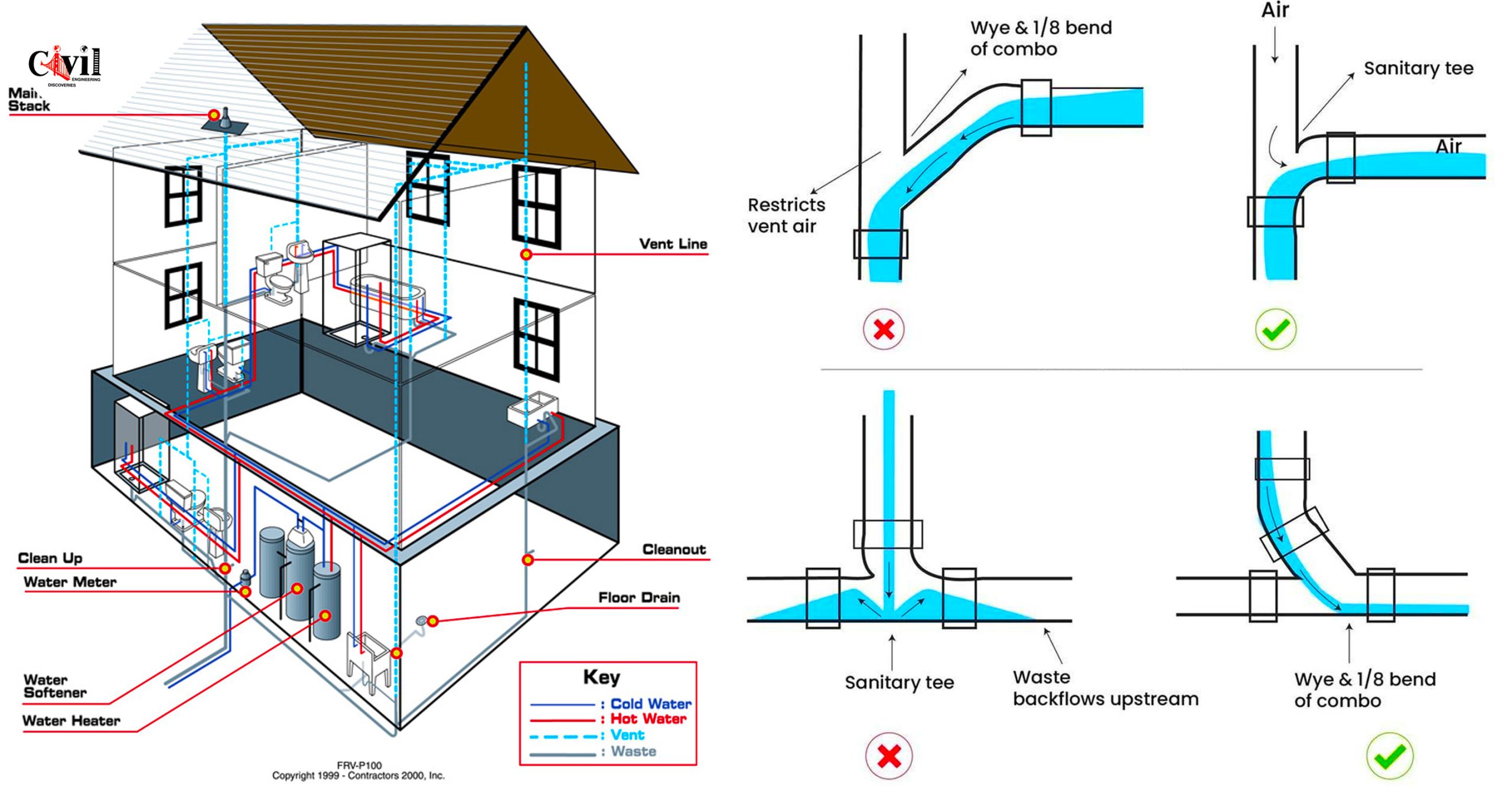Why The Design of Your Home's Plumbing System Matters
Why The Design of Your Home's Plumbing System Matters
Blog Article
What are your thoughts and feelings on Plumbing Installation 101: All You Need to Know?

Recognizing how your home's pipes system functions is necessary for each property owner. From supplying clean water for drinking, food preparation, and showering to securely getting rid of wastewater, a properly maintained plumbing system is crucial for your family's health and wellness and comfort. In this detailed overview, we'll discover the detailed network that comprises your home's pipes and deal ideas on maintenance, upgrades, and handling common problems.
Introduction
Your home's plumbing system is more than just a network of pipelines; it's a complicated system that guarantees you have accessibility to clean water and reliable wastewater elimination. Knowing its parts and just how they interact can help you avoid costly repairs and guarantee whatever runs efficiently.
Standard Elements of a Pipes System
Pipelines and Tubing
At the heart of your plumbing system are the pipelines and tubes that lug water throughout your home. These can be made of various products such as copper, PVC, or PEX, each with its advantages in terms of sturdiness and cost-effectiveness.
Components: Sinks, Toilets, Showers, and so on.
Fixtures like sinks, toilets, showers, and bathtubs are where water is made use of in your house. Recognizing exactly how these components connect to the pipes system aids in diagnosing issues and preparing upgrades.
Shutoffs and Shut-off Points
Shutoffs manage the circulation of water in your pipes system. Shut-off valves are critical during emergencies or when you require to make repair services, enabling you to isolate parts of the system without disrupting water circulation to the whole house.
Water Supply System
Key Water Line
The primary water line links your home to the municipal water system or a private well. It's where water enters your home and is distributed to numerous fixtures.
Water Meter and Pressure Regulatory Authority
The water meter steps your water use, while a pressure regulator makes sure that water moves at a risk-free pressure throughout your home's pipes system, avoiding damages to pipes and components.
Cold Water vs. Warm water Lines
Understanding the difference between cold water lines, which provide water straight from the primary, and warm water lines, which carry warmed water from the water heater, helps in repairing and planning for upgrades.
Drain System
Drain Pipes Water Lines and Traps
Drain pipes lug wastewater far from sinks, showers, and bathrooms to the sewer or septic system. Catches avoid sewage system gases from entering your home and additionally catch particles that could trigger clogs.
Air flow Pipes
Air flow pipelines allow air right into the drainage system, stopping suction that might slow water drainage and trigger traps to vacant. Proper air flow is important for preserving the integrity of your plumbing system.
Relevance of Appropriate Water Drainage
Ensuring appropriate water drainage prevents back-ups and water damages. On a regular basis cleansing drains and preserving traps can protect against costly repairs and prolong the life of your pipes system.
Water Heating Unit
Sorts Of Water Heaters
Water heaters can be tankless or standard tank-style. Tankless heating systems heat water as needed, while tanks store warmed water for prompt usage.
Upgrading Your Plumbing System
Factors for Updating
Updating to water-efficient fixtures or replacing old pipes can enhance water top quality, reduce water expenses, and boost the value of your home.
Modern Plumbing Technologies and Their Benefits
Check out modern technologies like clever leak detectors, water-saving bathrooms, and energy-efficient hot water heater that can conserve cash and minimize ecological influence.
Cost Considerations and ROI
Determine the ahead of time prices versus long-term savings when thinking about pipes upgrades. Lots of upgrades spend for themselves via reduced utility bills and fewer repair work.
Exactly How Water Heaters Connect to the Plumbing System
Comprehending exactly how water heaters link to both the cold water supply and warm water circulation lines assists in detecting concerns like not enough warm water or leakages.
Upkeep Tips for Water Heaters
Regularly purging your hot water heater to get rid of debris, examining the temperature level setups, and evaluating for leakages can prolong its life-span and boost power effectiveness.
Typical Pipes Problems
Leaks and Their Causes
Leaks can occur due to maturing pipelines, loose fittings, or high water pressure. Resolving leakages without delay protects against water damages and mold and mildew growth.
Blockages and Blockages
Clogs in drains and commodes are usually brought on by flushing non-flushable items or a build-up of oil and hair. Utilizing drain screens and being mindful of what drops your drains pipes can stop blockages.
Signs of Pipes Troubles to Look For
Low water stress, sluggish drains, foul odors, or unusually high water costs are indicators of prospective plumbing troubles that must be dealt with promptly.
Pipes Maintenance Tips
Regular Examinations and Checks
Arrange annual pipes assessments to catch problems early. Look for indicators of leakages, rust, or mineral build-up in taps and showerheads.
DIY Upkeep Tasks
Basic jobs like cleansing faucet aerators, looking for commode leakages using color tablet computers, or insulating revealed pipes in cold environments can avoid significant plumbing concerns.
When to Call an Expert Plumbing
Know when a pipes problem calls for expert knowledge. Trying complex repair services without proper understanding can result in even more damage and greater repair prices.
Tips for Decreasing Water Use
Simple behaviors like repairing leaks without delay, taking shorter showers, and running complete loads of washing and dishes can save water and reduced your utility costs.
Eco-Friendly Plumbing Options
Think about lasting plumbing materials like bamboo for floor covering, which is durable and environmentally friendly, or recycled glass for kitchen counters.
Emergency Preparedness
Actions to Take Throughout a Plumbing Emergency situation
Know where your shut-off shutoffs are located and exactly how to turn off the supply of water in case of a ruptured pipe or major leakage.
Importance of Having Emergency Calls Handy
Keep call information for regional plumbing technicians or emergency situation services readily offered for fast reaction during a pipes situation.
Environmental Effect and Preservation
Water-Saving Components and Appliances
Setting up low-flow taps, showerheads, and commodes can substantially lower water usage without sacrificing performance.
Do It Yourself Emergency Situation Fixes (When Applicable).
Temporary repairs like utilizing air duct tape to patch a leaking pipeline or positioning a pail under a dripping faucet can reduce damage up until a specialist plumbing professional gets here.
Verdict.
Understanding the anatomy of your home's plumbing system empowers you to preserve it successfully, saving time and money on repair work. By following routine maintenance routines and staying notified regarding contemporary pipes innovations, you can guarantee your pipes system runs successfully for many years to find.
HOW YOUR PLUMBING SYSTEM WORKS
Which Pipes Do What?
Blue lines = fresh water supply entering the building Red lines = hot water supply entering the building Grey lines = pipes carrying waste away from the building and venting pipes carrying gases away from the building (through the roof) YOUR MAIN PLUMBING SYSTEMS
There are two main plumbing systems that support your home s basic plumbing needs one that brings clean water into your home, and one that sends dirty water away from your home. Connected to the toilet, bath, shower, and other faucets in your home, these two systems keep your water flowing in the right directions.
ACCESSING FRESH WATER
Fresh and clean water is brought into your home through the main water supply line . Filtered through one pipe, this water is pressured to flow into the various fixtures in your home at any given time.
This water can be sourced from a well located on your property, a pond or river (mostly cottages), or, as in most cases, from the city s municipal water treatment centre. However, it is important to note that water that is untreated, such as the water siphoned from ponds or rivers, may not be safe to drink. Personal water supplies always need to be treated for hardness and contaminants before consumed.
MUNICIPAL WATER SUPPLIES
Improve taste and odour Remove sediment Eliminate hardness Reduce chlorine COLD WATER SUPPLY VS. HOT WATER SUPPLY
Cold water flows into your home or building through the service line, which then distributes hot or cold water to your fixtures. This line is most commonly run through a central column that runs floor to floor. Hot water runs in short and straight pipes as the longer the pipeline, the more heat that will be lost in the transfer. Having shorter pipes also allows residents to access hot water more quickly.
WASTE WATER SYSTEM
Your wastewater system is divided into two parts pipes that send wastewater away from your home and venting pipes that send sewer gas away from your home. Sewage water travels through pipes that flush the water and waste towards local sewers that are operated and managed by your city or town. Most sewer systems rely on gravity to move the wastewater to where it needs to go.
The further away from your toilet or sink, the larger wastewater pipes become. This allows for waste to be disposed of from various parts of your home or business at once without pipe blockages. The angle and flow of these pipes are also essential for keeping your waste pipes clear of build up.
https://harrisplumbing.ca/how-your-home-plumbing-system-works/

Do you enjoy more info about Plumbing Installation 101: All You Need to Know? Create a remark below. We will be happy to know your feelings about this blog entry. We are looking forward that you come back again soon. Sharing is good. Who knows, you will be helping someone out. Thanks a lot for taking the time to read it.
Schedule Your Job Now Report this page